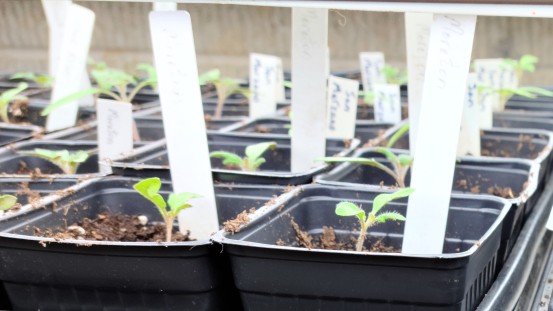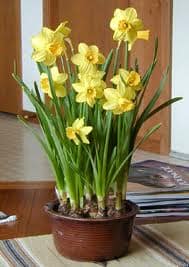
By Jennifer Fairfield, owner the Garden Mill
I think the month of March got itself a little confused this year – it’s supposed to go out like a lamb, but the wind the last few days was definitely much more lion-like.
Of course, the weather throughout the whole month was anything but normal – but I’m not complaining. All those warmer, sunnier days last month were just what we all needed.
I think April 1’s weather was Mother Nature’s idea of an April Fool’s joke, but, even though the next few days are a bit of a step back, it doesn’t look like the chillier temps are going to last very long.
If you haven’t gotten around to it yet, test your soil before you start planting.
We have two very easy and reliable testing kits in stock – one that offers a digital readout of results, and one that is a little more manual, but still easy to use. Your soil conditions change over time, so it’s best to test it every year.

Knowing what your soil is lacking, if anything, makes giving it what it needs to support good plant growth so much easier. This goes for every sort of garden, whether in the ground, in raised beds, or in containers, if you are using soil that was used for gardening of any sort in the past. If you are starting with fresh potting soil in your containers, make sure you know what is in that soil, before you start adding any fertilizer.
Make sure your garden tools are ready for the season. You’ll have an easier time of it if you sharpen, clean, and lubricate pruners, and loppers. If you’re not sure how, Felco offers helpful videos.
Shovels will also work better – taking less effort on your part – if sharpened. Check gloves and garden hoses for holes, and replace if necessary (all gloves are on sale at The Garden Mill this month, both in-store and online). Assess garden supports and stakes to make sure they are in good shape, and replace those that won’t make it through the season.
Have your lawn mower and other power equipment serviced so that it’s ready to go when the grass starts growing. Make sure you have what you need for the season.
What You Can Do Now
This weekend, start pepper and tomato seeds indoors, so they will be ready to put out in your garden in about eight weeks. Eggplant should be started about a week later than the other two, and gets put out in the garden about a week later, as well.
Plan to put tomato and pepper plants out in the garden around Memorial Day – by then, the nighttime temperatures are pretty consistently above 50°, and we aren’t likely to see frost again until fall. Eggplant likes it even warmer than the other two, so waiting a week to get them in the ground will give them a better chance to grow and produce.
Putting plants out before the temperatures are to their liking will only stunt their growth, so don’t be in too much of a hurry.

Pull mulch away from plants that are starting to poke up out of the ground as it warms up to help the soil warm up more quickly. Plan to cover the plants back up if temps head below freezing at night again. Add a top dressing of compost to your soil, after you pull the mulch back, to help improve soil structure and fertility.
Wait to add new mulch to your planting beds, trees, and shrubs until the soil has warmed up fully – usually after Mother’s Day, or even as late as Memorial Day weekend, though it could be a little earlier this year.
Just be careful not to put down new mulch too soon as that can keep the soil from warming up, and slow your plants’ growth and flowering.
With all the wind we’ve had, there are bound to be branches that have fallen in your yard. Get those cleaned up, along with any driveway gravel that may have been plowed onto the lawn that one time we had snow this winter, in order to make lawn-mowing easier, when it’s time. Rake up leaves that are on the lawn as well.
On a dry day later in the month, rake them into a pile and then run them over with a lawn mower to chop them into small pieces. These bits of leaves make a great (free) mulch that you can add to your flower beds, trees, and shrubs. Just don’t do this until we have daytime temps consistently above 50° so that insects that might be hibernating in them have a chance to come out.
Also wait until daytime temperatures are consistently in the 50’s to cut back grasses and most perennials that you left standing over the winter. The reason to wait until it has warmed up is to give the beneficial insects that have spent the winter in the hollow stems and on the leaves of your plants a chance to wake up. If you just have to cut things back and clean up earlier, don’t discard or burn what you remove – carefully place it somewhere else on your property that is out of sight.
If you remove the debris from your yard altogether, you remove those insects (bees, butterflies, and other beneficials like praying mantis) from your yard as well, and lose the great things they can do for your gardens.
(Part two of this column will publish tomorrow.)














